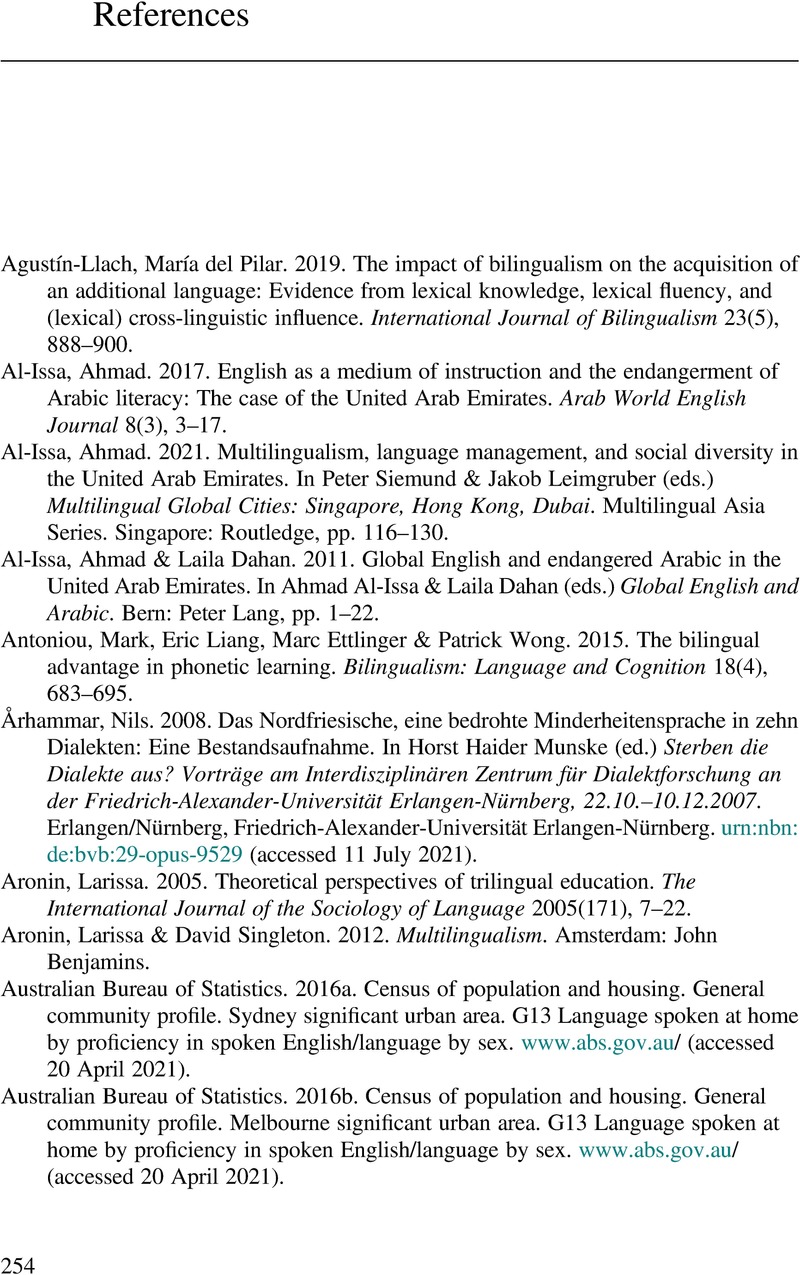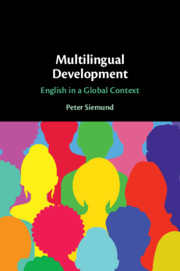Book contents
- Multilingual Development
- Multilingual Development
- Copyright page
- Epigraph
- Contents
- Figures
- Tables
- Preface
- Acknowledgements
- About the Author
- 1 Multilingualism
- 2 On Advantages and Effects of Multilingual Development
- 3 Cross-Linguistic Influence
- 4 Language Development in Multilingual Settings
- 5 Multilingual Language Policies, Identities, and Attitudes
- 6 The New Englishes in Their Multilingual Ecologies
- 7 Patterns and Limits of Multilingualism
- References
- Index
- References
References
Published online by Cambridge University Press: 17 January 2023
- Multilingual Development
- Multilingual Development
- Copyright page
- Epigraph
- Contents
- Figures
- Tables
- Preface
- Acknowledgements
- About the Author
- 1 Multilingualism
- 2 On Advantages and Effects of Multilingual Development
- 3 Cross-Linguistic Influence
- 4 Language Development in Multilingual Settings
- 5 Multilingual Language Policies, Identities, and Attitudes
- 6 The New Englishes in Their Multilingual Ecologies
- 7 Patterns and Limits of Multilingualism
- References
- Index
- References
Summary

Information
- Type
- Chapter
- Information
- Multilingual DevelopmentEnglish in a Global Context, pp. 254 - 282Publisher: Cambridge University PressPrint publication year: 2023
